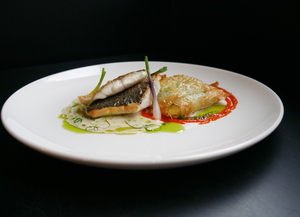Cottage cheese
The cottage cheese is also known as ricotta cheese in some South American countries. Its name comes from the Italian ricotta, and this one from the term recocta in Latin, which means “recooked or cooked again”. It is a kind of cheese obtained from a second processing of the whey derived from the making of soft cheese.
It is obtained from the fermented whey of the cheese. The whey is heated up to 90ºC so the proteins make a soft white buttery dough. Originally the cottage cheese was made with goat or sheep whey, but cow whey is mostly used nowadays.
It is a milk by-product with a mild delicate taste. It can be eaten on its own, with other foods such as salads, vegetables or on toasts or as an ingredient in many different sweet and savoury recipes. It is great for lightening desserts as a substitute for cheese or whipped cream, as it will reduce considerably the amount of calories in the recipe.
-
Type of dish
- Beers
- Cocktails
- Breakfasts and brunch
- Burguers
- Juices, milkshakes and beverages
- Shellfish
- Bread and pastries
- Pizzas, patty
- Dessert
- Pasta
- Sándwich
- Pastries
- Finger foods
- Ice creams and sorbets
- Legumes
- Salads
- Eggs
- Patty
- liqueur
- Harvard plate
- Main course
- Meats
- Fish
- Birds
- Vegetables
- Soups and creams
- Rices
- Coffee, chocolate and infusion
- Cheeses
- Appetizers and canapes
- Temperature
- Cuisine type
- Additional culinary preparation
- Conservation technique
- Seasonal recipes
-
- Aromatic herbs
- Beverages
- Big game hunt
- Bread and pastries
- Canned goods and pickles
- Cereals
- Condiments, spices and additives
- Cooked, salted, preserved and cold meats
- Dried fruits and nuts
- Dry pulses
- Edible oils and vinegars
- Eggs and derivatives
- Feathered game hunt
- Fish cuts
- Fishes
- Insects
- Kitchen and bakery tecniques
- Kitchen and bakery utensils
- Meat cuts
- Meats
- Milk, cream and derivatives
- Mushrooms
- Offal
- Pasta, rice, flour and derivatives
- Poultry
- Seafood
- Service techniques
- Service utensils
- Vegetables cuts
- Vegetables, fruits, tubers and seaweed



